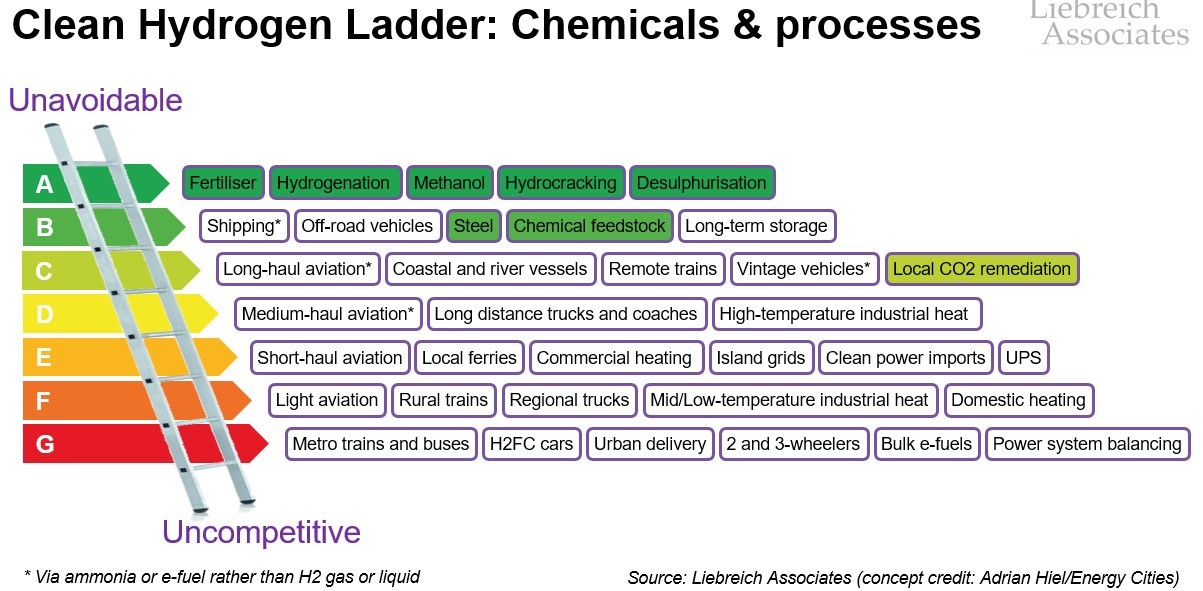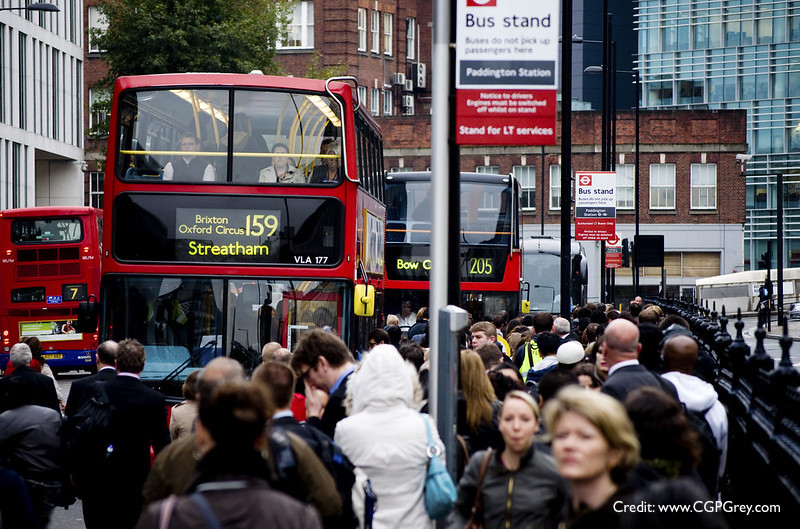UN Sustainable Development Goals – Let’s Not Sleepwalk to Disaster
In September 2015 the UN is due to adopt a set of Sustainable Development Goals (SDGs), to replace the successful Millennium Development Goals and govern its development work over the next 15 years. What is being proposed is a smorgasbord of good intentions, with 17 goals and 169 sub-goals, which will serve almost no useful purpose. Whilst some influential voices have spoken out about this absurdity, it seems impossible to stop.
At the purely numerical level, 17 goals and 169 sub-goals are about as useful as no goals at all. But of even greater concern is the sheer lack of logic and structure in the proposed list. Intellectually, this has to be the weakest document to have come out of the UN system for decades[i]. Don’t believe me? Here are the goals, interspersed with a few critiques:
1. End poverty in all its forms everywhere
OK, nice and clear.
2. GOAL 2 End hunger, achieve food security and improved nutrition and promote sustainable agriculture
Why is sustainable agriculture tacked on here, rather than included in Goal 15, which appears to be about land management?
3. GOAL 3 Ensure healthy lives and promote well-being for all at all ages
What does “well-being” mean? While there are accepted metrics for health, well-being seems entirely subjective. Does it include spiritual well-being? Happiness? Who gets to decide whether I am exhibiting the required level of well-being?
4. Ensure inclusive and equitable quality education and promote lifelong learning opportunities for all
OK, but I would expect innovation to feature here, not to be bundled along with infrastructure into Goal 9.
5. Achieve gender equality and empower all women and girls
This is clearly one of the world’s vital issues, but logically it is surely a subset of Goal 16, “promoting inclusive societies”.
6. Ensure availability and sustainable management of water and sanitation for all
OK, nice and clear
7. Ensure access to affordable, reliable, sustainable and modern energy for all
Goals 6 and 7 both refer to life essentials, water in the case of Goal 6 and energy in the case of Goal 7. The devastating impact of air pollution, however, is absent, despite the WHO finding it causes 7 million deaths per year worldwide.
8. Promote sustained, inclusive and sustainable economic growth, full and productive employment and decent work for all
Setting aside criticism of the ghastly “sustained… sustainable economic growth”, can anyone explain where full employment ends and ending poverty (Goal 1) begins?
9. Build resilient infrastructure, promote inclusive and sustainable industrialization and foster innovation
This is where things start to get really sloppy. Goal 8 already commits us to “sustained… sustainable economic growth”, now we have a specific goal to promote “sustainable industrialisation”. This is mixed in with some stuff about infrastructure and an apparently gratuitous mention of innovation.
10. Reduce inequality within and among countries
Aha, inequality. It’s not enough that poorer people and less developed countries do well, wealthy people and countries must be reigned in. The sub-goals reveal the agenda is to promote equality of outcome and financial regulation. Trade gets only a passing mention.
11. Make cities and human settlements inclusive, safe, resilient and sustainable
No one can argue with the need for sustainable cities, but in what way are they separable from sustainable infrastructure (Goal 9)?
12. Ensure sustainable consumption and production patterns
Can anyone explain how “sustainable production” is to be distinguished from “sustainable growth” (Goal 8) and “sustainable industrialisation” (Goal 9).
13. Take urgent action to combat climate change and its impacts
OK, nice and clear.
14. Conserve and sustainably use the oceans, seas and marine resources for sustainable development
More ghastly wording, as we “sustainably use… for sustainable development”. But more importantly, why are only oceans, seas and marine resources to be conserved, but not fresh-water resources? If this is about water supplies, that’s Goal 6. If it is water-based ecosystems, it needs to be comprehensive.
15. Protect, restore and promote sustainable use of terrestrial ecosystems, sustainably manage forests, combat desertification, and halt and reverse land degradation and halt biodiversity loss
There is no logic behind excluding sustainable agriculture here and including it instead with hunger (Goal 2).
16. Promote peaceful and inclusive societies for sustainable development, provide access to justice for all and build effective, accountable and inclusive institutions at all levels
Vital work, but the text mixes a real goal (though one which is very hard to measure) with the creation of institutions to deliver it. Also notable is the complete failure to mention democracy, religious tolerance or discrimination on the basis of sexual preference anywhere in the proposed SDGs.
17. Strengthen the means of implementation and revitalize the global partnership for sustainable development
It is simply circular to include as a 17th goal the means of achieving the other 16. But you don’t have to be fluent in UN-speak to realise that Goal 17 is really just a thinly-veiled demand for funding. Perhaps not surprisingly, it has more sub-goals than any of the others. Tax-free pensions all round!
The UN is claiming the proposed SDGs are the natural and empowering result of the largest consultation in its history. In addition to the 70-member working group which drew up the proposed SDGs, it ran 11 thematic and 83 national consultations, door-to-door visits and an online survey. Sadly, the failure to edit down the results with any sort of intellectual rigour means the SDGs will be pretty much useless. You can’t set priorities, design programs or assign budgets around this fruit salad. No one outside the UN system is going to even read down to number 17 and its subgoals, let alone be inspired.
Above all, no one can be held accountable for their achievement or, more likely, non-achievement. If you were a cynical observer of the UN – of whom I am told there are many – you might think lack of accountability was the goal of the exercise all along. However, that would not be quite correct. The truth is that the SDGs are the victim of the success of the Millennium Development Goals.
You will immediately note that were just 8 MDGs[ii] (and just 21 sub-goals):
1. To eradicate extreme poverty and hunger
2. To achieve universal primary education
3. To promote gender equality and empower women
4. To reduce child mortality
5. To improve maternal health
6. To combat HIV/AIDS, malaria, and other diseases
7. To ensure environmental sustainability
8. To develop a global partnership for development
The MDGs have been surprisingly successful. While they are certainly not going to be achieved in full by the end of 2015, almost all have seen significant progress, in some cases overshooting their targets, for instance in the areas of poverty, gender disparity in schools, HIV/AIDs and clean water.
The problem this creates for 2015-2030 Sustainable Development Goals is that the development community has realised this stuff matters. Failure to get your programmatic area explicitly mentioned in the SDGs carried with it a substantial risk to your status and your budget. And so the horse-trading began. It was already heavily in evidence at the Rio+20 conference in Brazil in 2012, where the outcome document, with the inspiring title “The Future We Want”, ran to a mind-numbing 55 jargon-filled pages[iii].
Exacerbating the problem is the sheer proliferation of different constituent bodies that make up the UN. When it comes to development, where does the remit of the Industrial Development Organisation (UNIDO) end, and that of the Development Programme (UNDP) begin? Do these two coordinate with the Committee for Development Policy (UNCDP)? Who wins if they disagree with the Commission on Science and Technology for Development (UNCSTD) or the Conference on Trade and Development (UNCTAD)? When they do agree, do they still need to get their priorities approved by regional bodies like the Commission for Africa (UNECA)? What about UNESCO, UNITAR, UNRISD or any of the 97 or so other UN bodies[iv] who might have an interest in the outcome?
But the weakness of the proposed SDGs is not just down to the UN’s alphabet soup of agencies. It is also driven by the entire edifice of bien-pensant, post-colonial Fabian thinking that serves as an intellectual framework for most of the development community, as first expertly dissected by Daniel Patrick Moynihan, U.S. Ambassador to the United Nations, in 1975[v].
The proposed SDGs include 41 mentions of the word “access”, 17 of “inclusive”, 9 of “equitable”, but not one mention of “telecoms”, “mobile phones”, “big data”, “universities”, “business” or “enterprise”. Science appears just three times, entrepreneurship twice. The word “enterprises” appears only in the context of promoting SMEs, de facto demonising large corporations. Finance is spoken about only in terms of the universal right of access to it, never in terms of its role in efficiently allocating capital to growth opportunities. Financial regulation is all about achieving equality of outcomes, not about enabling capital formation or reducing costs through increased trust. Trade is portrayed as something the world needs to be protected from, rather than as what it generally is – an engine of growth, wealth and development.
Watching these SDGs take shape is like one of those nightmares in which you know something bad is happening, but you are powerless to stop it. In September last year Abhijit Banerjee and Varad Pande, both involved in the secretary general’s High-Level Panel for the Post-2015 Development Agenda, wrote in the New York Times: “More ingredients do not always make the best cake… what is needed now is a clear, concise set of objectives. Without them, the entire project is in very real danger of failing[vi].” David Hallam, UK Envoy on Post-2015 Goals, said “we are still some way away from a set of goals that inspires action, is genuinely workable, and can be used as a basis for accountability locally, nationally and internationally[vii].” UK Prime Minister David Cameron was more blunt, calling for not more than 12 goals, preferably 10: “Frankly … I don’t believe they will cut it at 17. There are too many to communicate effectively.”
Yet despite interventions such as these, the proposed list looks almost certain to go through on the nod. A special conference in Addis Ababa in July 2015 is due to discuss how the SDGs will be funded, and I wouldn’t expect many volunteers to withdraw their pet targets before then. From there it is pretty much straight to New York in September to have them rubber-stamped by a UN Special Summit on Sustainable Development.
For what it’s worth, I had a crack at boiling down the 17 Goals to a more logical and manageable list. It took me about an hour to get it down to 11, sort out most of the overlaps, remove the goals which are only of interest within the aid and development communities, and ensure each critical area gets just one goal. Finally I introduced a new goal to recognise what we all know, namely that private enterprise will be key to delivering any sort of development, sustainable or otherwise, to make 12.
Here are the proposed Liebreich SDGs:
1. Poverty: End poverty in all its forms everywhere
2. Hunger: End hunger, achieve food security and improved nutrition
3. Health: Ensure healthy lives for all at all ages
4. Education: Ensure inclusive, equitable high-quality, life-long education for all
5. Essentials: Ensure all have access to critical life resources including clean air, water and sanitation, as well as affordable, reliable, sustainable, modern energy
6. Land: Promote sustainable agriculture, sustainably manage forests, combat desertification and land degradation, protect and restore terrestrial ecosystems, and halt biodiversity loss
7. Waters: Conserve, protect and sustainably use lakes, rivers and streams, aquifers, oceans, seas and marine areas
8. Economy: Promote inclusive and sustainable economic growth, with full, productive and decent employment for all, and sustainable patterns of production and consumption
9. Infrastructure: Build safe, resilient, sustainable and inclusive cities, settlements and infrastructure of all types
10. Society: Promote peaceful, discrimination-free, inclusive societies, with gender equality and access to justice for all
11. Climate: Take urgent action to combat climate change and manage its impacts
12. Enterprise: Recognise the vital role of innovation, entrepreneurship, business, trade and finance in eliminating poverty and delivering improved standards of living, and use smart regulation to direct it towards sustainable development
The point is not that you have to agree with my SDGs – though I would be flattered if you did. The point is that it is not at all difficult – as long as you are insulated from the cacophony of the UN and its legions of stakeholders – to come up with a more elegant, actionable, inspiring and internally consistent list.
Surely it is worth one more try. Hundreds of millions of people in the developing world – indeed billions of people everywhere – deserve nothing less.
References:
[i] Report of the Open Working Group on Sustainable Development Goals; 8 September 2014 https://sustainabledevelopment.un.org/sdgsproposal
[ii] What Are the Millennium Development Goals; UN Millennium Project, 2002: http://www.unmillenniumproject.org/goals/
[iii] The Future We Want; outcome document of the United Nations Conference on Sustainable Development, Rio, June 2012: https://sustainabledevelopment.un.org/futurewewant.html
[iv] The United Nations System Organisation Chart; UN Department of Public Information, August 2013: http://www.un.org/en/aboutun/structure/org_chart.shtml
[v] The United States in Opposition; Daniel Patrick Moynihan, Commentary, https://www.commentarymagazine.com/article/the-united-states-in-opposition/
[vi] How to Prioritize U.N. Goals; Abhijit Banerjee and Varad Pande, New York Times, 10 September 2014: http://www.nytimes.com/2014/09/11/opinion/how-to-prioritize-un-goals.html
[vii] The Post-2015 Development Agenda – One Year To Go; David Hallam, blog, 22 September 2014: https://dfid.blog.gov.uk/2014/09/22/the-post-2015-development-agenda-one-year-to-go/
Terms of use: photos and other media may be used exclusively for the purpose of publicising an upcoming or past event involving Michael Liebreich, or to illustrate an article written by him. Their use must be accompanied by a clear indication of copyright in the following form:
© Liebreich Associates/name of photographer. Photos or other media downloaded in this way remain the property of Liebreich Associates Ltd. Any infringement of these terms of use may result in legal action by Liebreich Associates Ltd or by the respective photographer or rights holder.





